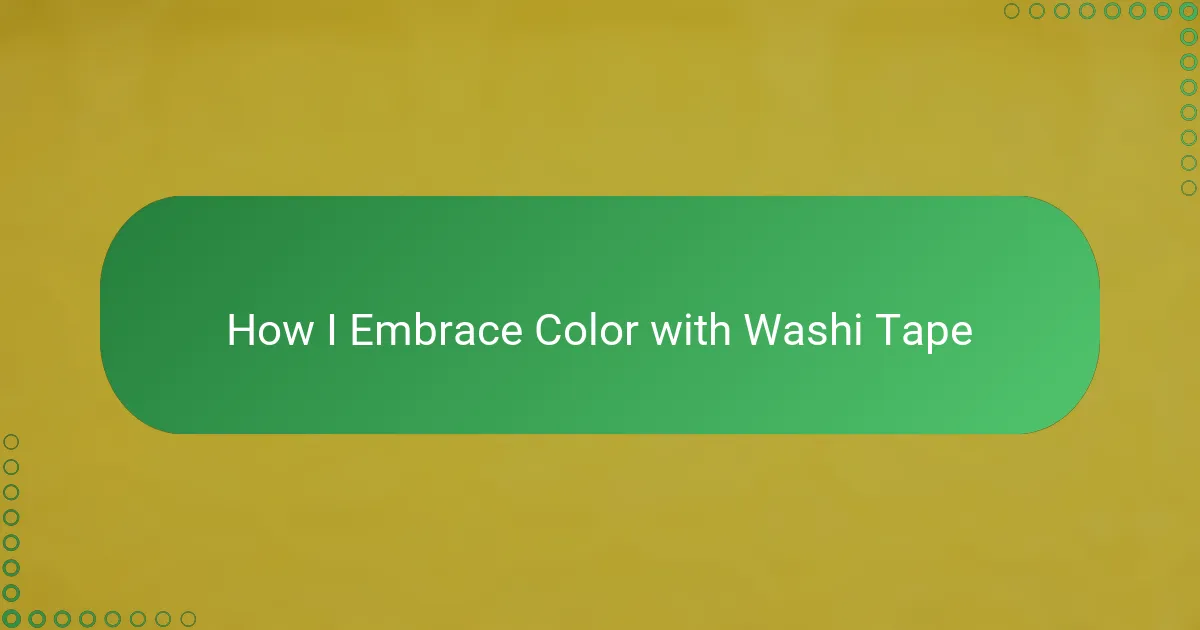Key takeaways
- Washi tape, made from natural fibers, enhances paper crafts with unique textures and colors, allowing for creative expression.
- It is user-friendly, enabling repositioning and experimentation, making it easier to craft confidently without fear of mistakes.
- Choosing complementary colors and patterns can create harmonious designs, and mixing unexpected choices can invigorate creativity.
- Proper storage and handling of washi tape, such as keeping it upright and in a cool, dry place, ensures its longevity and usability.
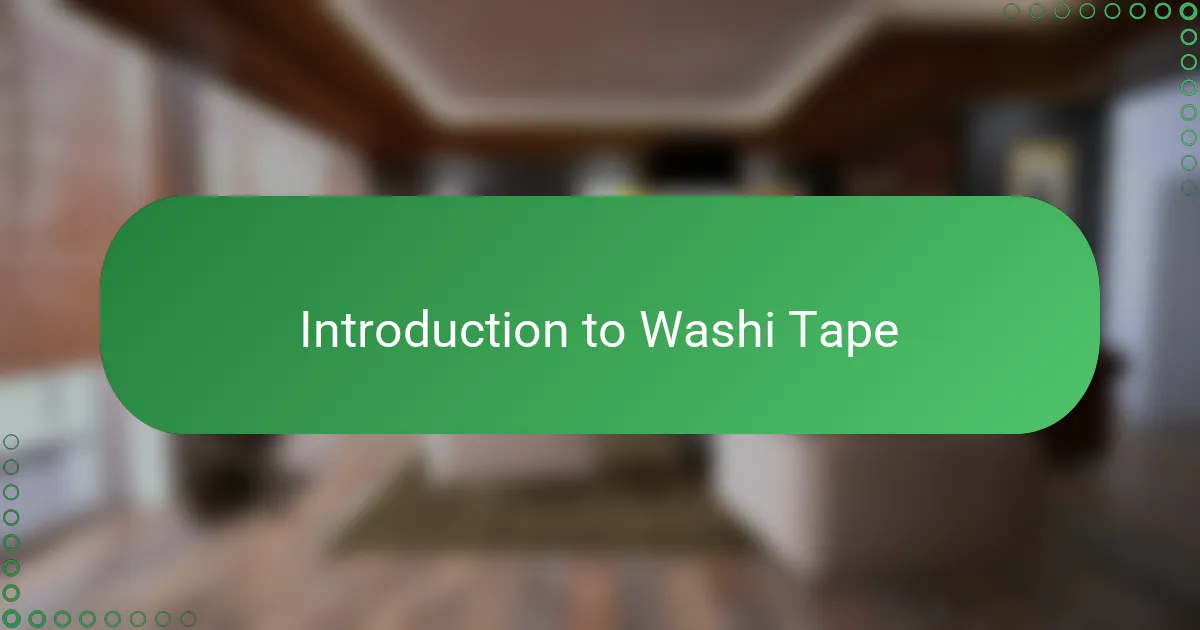
Introduction to Washi Tape
Washi tape is one of those simple joys that can transform any paper craft project with its burst of color and pattern. I remember the first time I discovered it—I was instantly hooked by its delicate texture and the way it stuck without leaving a sticky residue behind. Have you ever used something so versatile that it feels like a secret weapon in your craft kit?
What fascinates me most about washi tape is its origin. It’s made from natural fibers like bamboo or hemp, giving it a softness that traditional tapes just don’t have. This natural appeal makes every strip feel like a tiny piece of art in itself, enhancing handmade paper crafts in a way that feels both unique and personal.
Using washi tape isn’t just about decoration; it’s a way to express mood and style effortlessly. I often find myself asking—what color or pattern matches the feeling I want to share today? That playful question sparks creativity and keeps my projects fresh and full of personality.
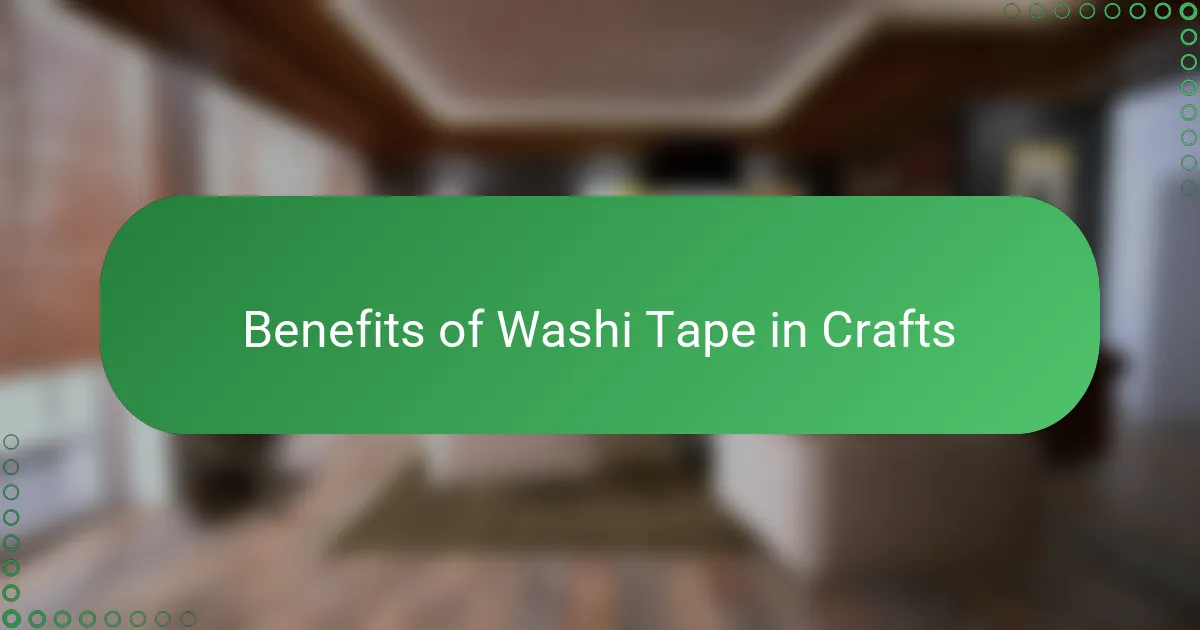
Benefits of Washi Tape in Crafts
One of the biggest benefits I’ve found with washi tape is how easy it is to use without worrying about mistakes. Have you ever pulled off a strip and repositioned it perfectly? That flexibility means I can experiment freely, which is a huge confidence booster when crafting.
I also appreciate how washi tape adds texture and dimension without overwhelming a design. Its subtle translucence lets underlying patterns peek through, giving my paper projects an extra layer of depth that feels surprisingly sophisticated for something so simple.
Plus, I can’t overstate how much color variety washi tape brings to the table. It’s like having a mini rainbow at my fingertips, making it effortless to match any theme or mood. Occasionally, I’ll even mix patterns just to see how far I can push my creativity—and that’s when the real fun begins.
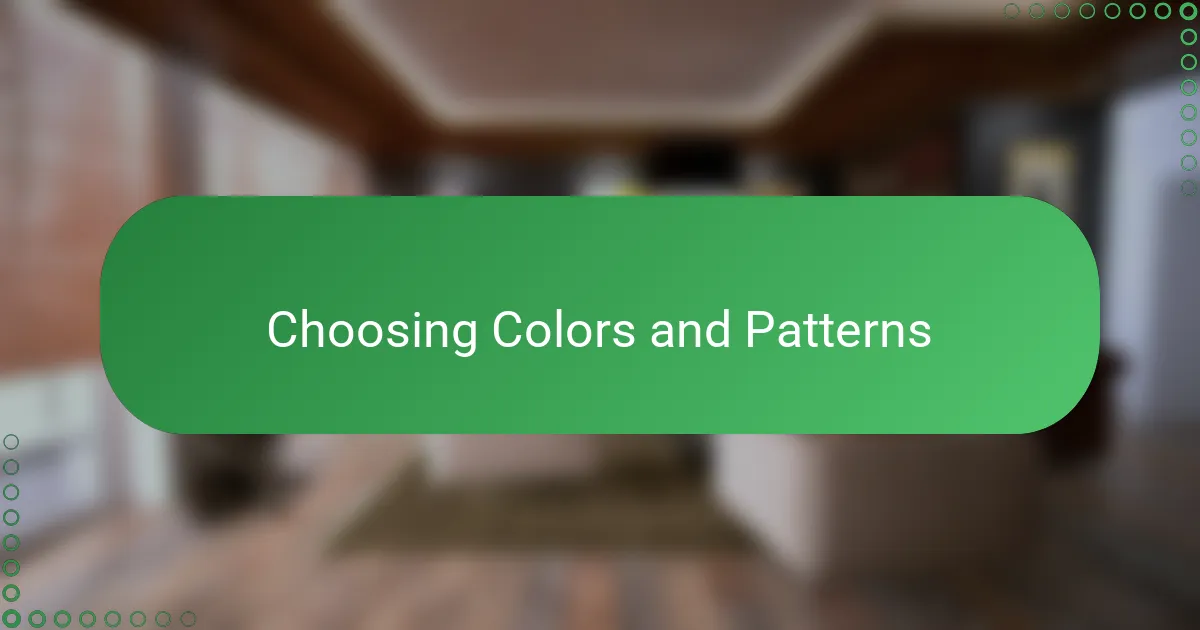
Choosing Colors and Patterns
Choosing colors and patterns for washi tape always feels like picking the mood for my project. Do I want something bold and bright to energize the design, or soft pastels to keep it calm and dreamy? That question guides me every time, and playing with different palettes becomes a kind of creative game.
I often find myself drawn to patterns that tell a mini story—florals that remind me of spring mornings or geometric shapes that add a modern twist. Combining a couple of these can be tricky, but when the colors harmonize, it’s like watching a symphony come to life on paper. Have you noticed how certain patterns just seem to “click” together, elevating the whole piece?
Sometimes, I surprise myself by mixing unexpected colors or patterns, stepping outside my usual favorites. That moment of hesitation quickly turns into delight when I see how those contrasting tapes breathe fresh energy into my crafts. It’s a little risk that always pays off and keeps my projects feeling vibrant and unique.

Techniques for Applying Washi Tape
When I first started applying washi tape, I quickly realized that the simplest technique—cutting strips by hand and laying them down smoothly—was incredibly satisfying. But then I began experimenting with layering tapes at angles or overlapping edges, which added unexpected texture and depth. Have you ever tried creating a striped or chevron pattern just by carefully cutting and placing each strip? It’s surprisingly meditative.
Another trick I love is tearing the tape instead of cutting it. The rough, uneven edges give a rustic, handmade feel that contrasts beautifully with crisp paper edges. It reminds me of when I wanted a more organic look for a journal page and just tore strips freely, embracing the imperfection. That little imperfection actually made the whole piece feel warmer and more personal.
For those precise moments, using a craft knife to trim washi tape after applying it ensures clean lines and perfect fits around delicate shapes. I always keep a small blade nearby because sometimes the right cut can elevate a simple border into a statement detail. Have you noticed how just a little extra care in placement and trimming can transform your washi tape from decoration to art?

Creative Project Ideas
One of my favorite creative projects with washi tape is designing personalized bookmarks. I love how a few colorful strips can turn plain cardstock into something both functional and eye-catching. Have you ever noticed how mixing a bold pattern with a soft pastel can create a little masterpiece that’s uniquely yours?
Another idea I often return to is embellishing handmade greeting cards. I find that layering different tapes in complementary colors adds such a charming texture without overwhelming the design. It’s like giving a simple card a touch of personality that speaks louder than words.
Sometimes, I get playful by turning washi tape into mini frames for photos or tiny notes on scrapbook pages. That border of color instantly draws attention and adds a handcrafted feel that feels warm and inviting. Have you tried framing an everyday snapshot this way? It’s a subtle detail but one that makes your memories pop.
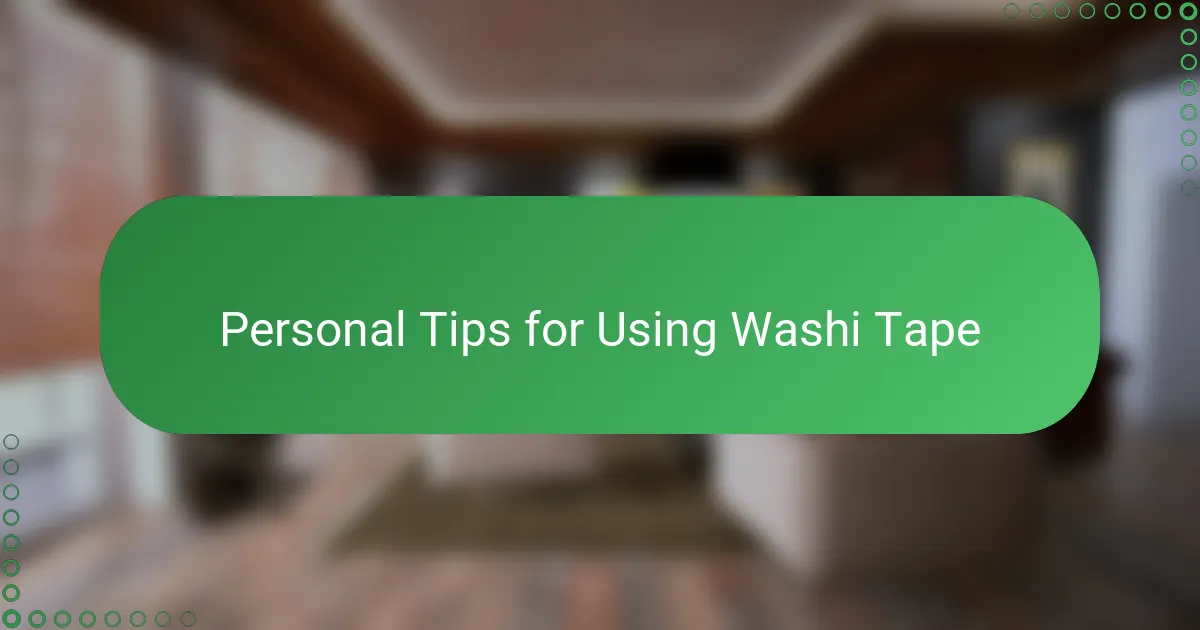
Personal Tips for Using Washi Tape
One personal tip I’ve learned is to always keep my washi tape rolls within arm’s reach while crafting. There’s something about having them visible that sparks spontaneous inspiration—I often catch myself pulling out a strip just to brighten up a blank corner or add a quick highlight. Have you ever noticed how that little dash of color can instantly lift your whole project?
I also like to think of washi tape as more than just decoration; it’s a storytelling tool. When I’m feeling stuck, I ask myself, “What mood or memory do I want to share here?” Sometimes that guides me to choose a tape with a nostalgic pattern or a vibrant hue that reminds me of a favorite place. This emotional connection often makes the final piece feel more meaningful, not just pretty.
Lastly, don’t be afraid to layer and overlap your tapes. Early on, I hesitated, worried it might look messy. But over time I realized that those overlapping edges can create depth and texture that flat strips can’t achieve alone. Plus, experimenting with layering turned crafting into a playful process instead of a perfection test. Have you tried building layers like this? It might just unlock a new level of creativity for you too.
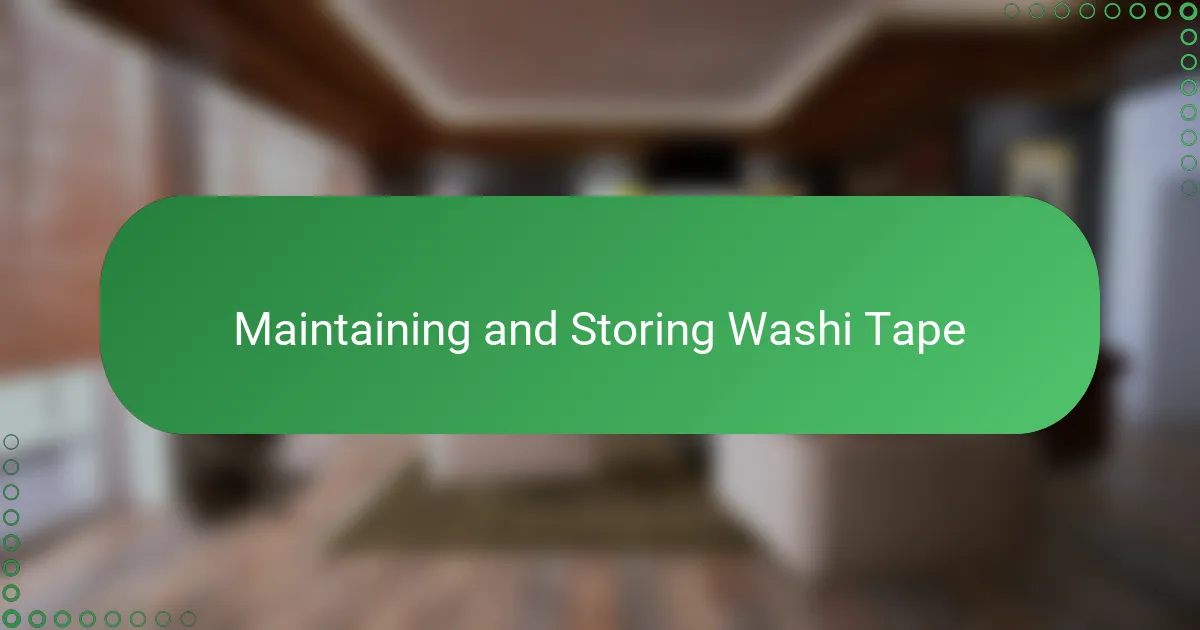
Maintaining and Storing Washi Tape
Keeping washi tape in good shape has been a bit of a learning curve for me. I used to toss my rolls haphazardly into a drawer, only to find them tangled and wrinkled later. Now, I make sure to store them upright in a clear container, which keeps each roll clean and easy to spot—have you ever struggled to find the tape you wanted in a messy stash? That simple change has saved me so much time and frustration.
I also pay attention to temperature and humidity because I noticed my tape sometimes loses its stickiness if left in a damp spot. Storing washi tape in a cool, dry place feels like a small act of respect for the materials I love working with. Have you ever experienced tape that just won’t cooperate because it’s been neglected? It’s frustrating, but prevention helps.
One trick I swear by is wrapping the loose end of the tape back onto the roll after each use. This little habit keeps the edges from curling or sticking to unwanted surfaces, preserving that smooth application I enjoy. It’s such a small step, but it makes the tape feel fresh and ready for my next project every time. Do you have this routine, or do you find yourself wrestling with unruly edges?
